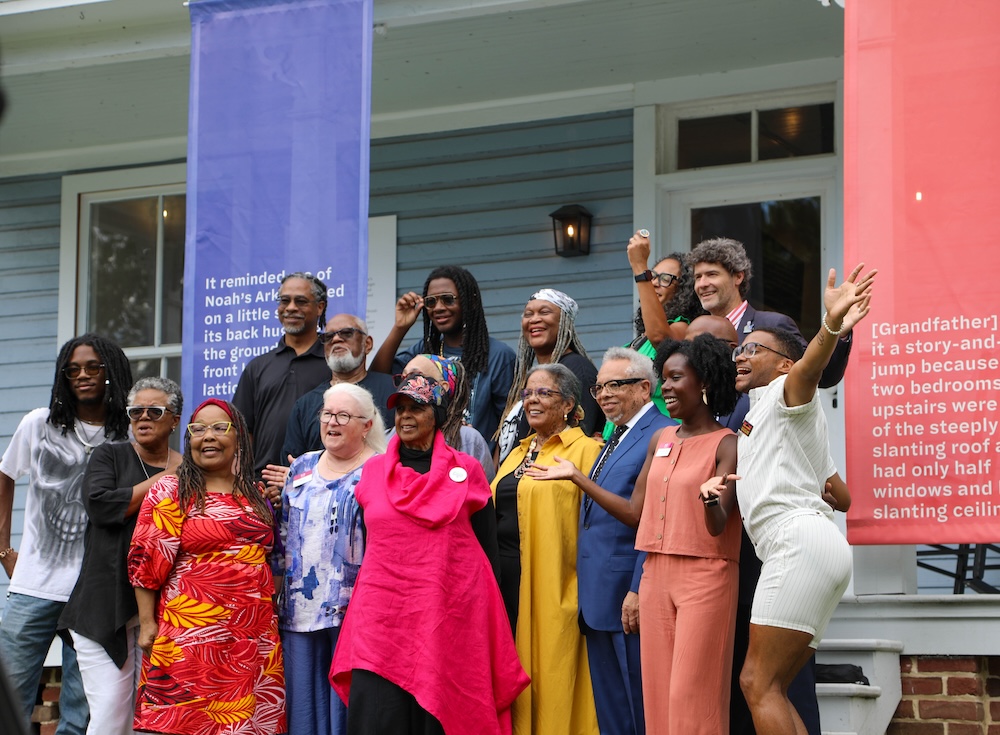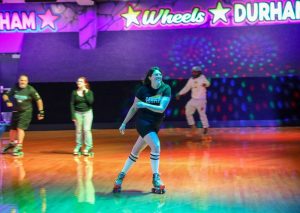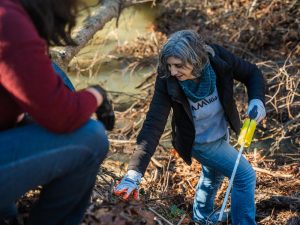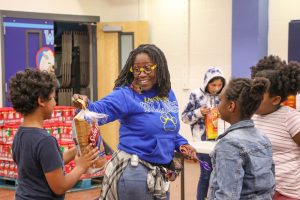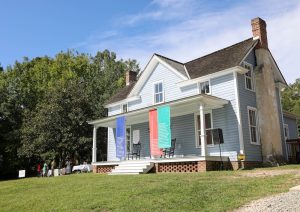Taylor Mary, dressed in a long lace dress with black combat boots, sits at the top of a grassy hill under a magnolia tree, dipping back and forth in a white wooden rocking chair. Moving in and out of the tree’s shade, she inscribes clothespins with quotes from the Rev. Pauli Murray for an ancestral altar in Murray’s memory.
Down the hill, hundreds have gathered this Saturday to celebrate the grand opening of the Pauli Murray Center for History and Social Justice after 15 years of renovation. The event, centered on Murray’s childhood home on Carroll Street, commemorates a Durham change-maker, a historical figure whose significance fits no single category.
Born in Maryland in 1910, Murray moved to Durham to live with an aunt and grandparents. As an adult, Murray accumulated many titles: writer, activist, agitator, reverend and trailblazer.
Murray became active in civil rights in the 1930s, working to end segregation in public transport before joining the women’s rights movement. Murray later earned law degrees from Howard University and Yale Law School and in 1977 was ordained as an Episcopal priest, earning recognition at the time as the first Black female in that role.
Yet Murray’s gender identity was complicated. The activist questioned gender and sexuality at a time when being openly queer was illegal, even wondering in writing whether this was, “one of nature’s experiments; a girl who should have been a boy.”
Within the newly renovated house-turned-exhibit space, each tension of Murray’s identity is on display. “Between Male & Female, Between Black & White, Between Homosexual & Heterosexual, Between Working Class & Middle Class,” reads one section in the inaugural exhibit.
The event is as much of a mosaic as Murray was.

Tables line the street offering resources on voting in North Carolina, historical archives, and information on Triangle activist groups. Speakers present at the front of a white tent, while visitors watch the proceedings or engage with the stalls.
Cars line the curbs of surrounding blocks, including one with a bumper sticker proclaiming, “Get in, loser. We’re smashing imperialism.” Next door, the Morehead Avenue Baptist Church has no spaces to spare for additional visitors.
The scene is so stimulating that a sign offers a “low sensory zone,” a nearly empty area where a few chairs and tables sit away from the main lawn.
While watching speakers discuss Murray, two women, holding a stroller between them, share a brief kiss. Nearby, Stormie Daie, a local drag queen, turns heads with bright blue hair and a light blue, silver, and black dress. She sits under the tent, fanning herself with a massive folding fan inscribed with the word “SHADE.”
Rainbow pinwheels spin in the wind beside the tent. Attendees pull the wheels from a wagon and plant them on the ground. A little boy walks up, red pinwheel in hand, to lay his mark on the display.
Jesse Huddleston, the center’s board chair, breaks into an impromptu rendition of “Lean on Me” to gather the group’s attention and announce that poetry time has begun.
The newly renovated home, painted blue and white, is a physical marker of Murray’s existence and impact, says Angela Thorpe, executive director of the Pauli Murray Center for History and Social Justice.
“It’s a touchstone,” Thorpe says, “This house bears witness to that existence.”

Running her hands along the home’s newly painted walls, Clotilda Watson, 69, remembers her childhood there: “Same walls, same door.” The opening is an emotional experience for Watson, who lived at 906 Carroll St. from the time she was three years old, always knowing that Murray once occupied her home.
From Murray’s hands to Watson’s and others, the house has been a home longer than a monument. Now, Thorpe believes it’s a home for all.
“Welcome home,” Thorpe says to the crowd as friends of the center—board members, political representatives, center staff, and Murray’s relatives—move towards the house’s entrance dressed in bright yellow, blue, and pink.
Two of Murray’s relatives—Rosita Stevens-Holsey, Murray’s oldest living niece, and Lygia Yarborough, a local relative—stand at the center, holding black scissors over a large purple ribbon.
The two women slice through the ribbon. Later, small pieces of the purple band will be distributed to family members as mementos of the historic day.
In the distance, a pair of women’s brown shoes hangs from the magnolia tree at the top of the hill. The shoes pay homage to Murray’s book “Proud Shoes,” which chronicles the stories of Murray’s maternal grandparents’ lives through slavery and freedom.
The shoes spin in the wind alongside photos of Murray on circular mirror pieces.
The Pauli Murray Center is open.
Above: Friends and board members of the Pauli Murray Center and relatives of Pauli Murray gathered at Murray’s renovated childhood home to mark the center’s opening. Photo by Abigail Bromberger — The 9th Street Journal.

